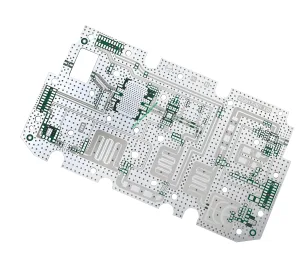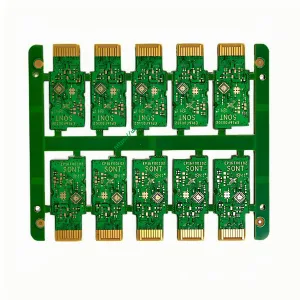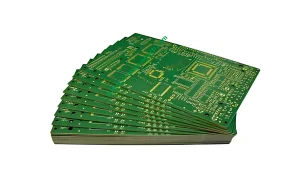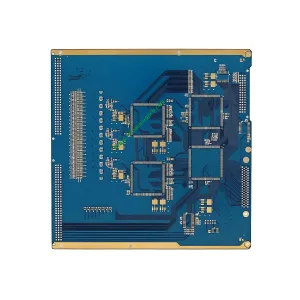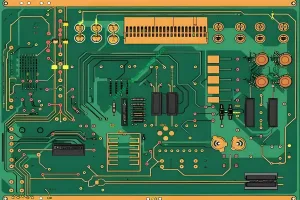Industry Leading, Standard Loss, Thermally Robust Epoxy Laminate and Prepreg
isola 370hr is the industry’s “best in class” lead-free compatible product for high-reliability applications across a wide range of markets.
isola 370hr laminates and prepregs, deigned by Polyclad, are made using a patented high performance 180°C Tg FR-4 multifunctional epoxy resin system that is designed for multilayer Printed Wiring Board (PWB) applications where maximum thermal performance and reliability are required. isola manufacture isola 370hr laminates and prepregs with high quality E-glass glass fabric for superior Conductive Anodic Filament (CAF) resistance. isola 370hr provides superior thermal performance with low Coefficient of Thermal Expansion (CTE) and the mechanical, chemical and moisture resistance properties that equal or exceed the performance of traditional FR-4 materials.
isola 370hr is used in thousands of PWB designs and has proven to be best in class for thermal reliability, CAF performance, ease of processing and proven performance on sequential lamination designs.
Although everyone agrees that one of the most pressing needs in the technical field is “How do we achieve the next generation of high-speed data transmission rates?” There are different opinions on how to achieve this goal. There are even differing opinions regarding our current position in this process. Some companies claim that they are only struggling to obtain 28Gbps products, other companies say they are satisfied with 28Gbps technical solutions, and some companies claim that they have given up 28Gbps and have a (data) streaming rate of 56Gbps. Although our status as the hardware industry relative to high-speed data transmission rates may not be exactly the same, there are still some concessions.
The first thing given is that even if we successfully achieve an information transmission rate of 28 Gbps, as an industry, we must accept that even with the best materials available today, we can only barely reach 56 Gbps, which is the next step in the data transmission rate ladder. level.
For my own inspiration, I used various materials (including PTFE (Teflon PCB)) to draw insertion loss diagrams for typical long-distance backplanes, which is the best material we hope to use for PCBs. However, the cost of PTFE is so high that it is not a feasible solution for the short-term or long-term future generations of commercial hardware. The reality is that we have gone from FR-4 laminate to now we are now using more complex materials, such as Isola 370hr. Materials like Isola 370hr enable our speed to reach 28Gbps, and may enable our short-range and medium-range systems to reach 56Gbps. But after that, we will reach the limit of products that we can reasonably expect to provide higher information transmission rates.
The second problem is that we cannot increase bandwidth without optics. Optical systems have almost unlimited bandwidth, but the pure and simple problem is that it is difficult to replace the number of optical connections required on the PCB with the total bandwidth that the copper traces can, if it is almost impossible at times. Embedded silicon photonics may be the answer for the future, but everything about silicon photonics is important-the materials, the way engineers designed the isola 370hr PCB, and the way these PCBs are made.
In about 20 years, I think we will mass produce silicon photonic PCBs, but it may not be earlier. And, as mentioned above, the transition to silicon photonics is not a simple process-everything must change. The industry we are in now is a PCB infrastructure, paying for all machines, all equipment, all materials and all manufacturability. PCBs with copper are very cheap. Optics is currently not.
The third problem is that we need a bridging technology that enables us to shift from today’s PCB solutions to future silicon photonics products.
Although an order of magnitude may be a bit vague technical descriptor, it represents the third generation of telecommunications equipment. Standard design requirements for enterprise-level equipment.
When people think of cable TV, they think of the large connectors used on today’s backplanes. Ultimately, what we have to do is to replace the PCB traces with cables. It is particularly worth noting that when we use copper wires instead of traces on the PCB, the design rules are easy. What we need to consider is the skew of the cable (as opposed to the skew caused by the glass braid in the PCB). Then, there are connectors from the board to the cable. All this is easy to understand. If we are in a well-designed design area with limited materials or limited cables, the solution only requires how many inches of cable we need and the required wire diameter. Using this technique, the losses associated with it are very small compared to PCB traces. In terms of manufacturing issues, the process actually becomes easier. By using copper cables on the PCB, we don’t need complex, expensive materials. We can use materials such as Isola 370HR or even Isola FR408; these materials are cheaper than composite laminates such as Tachyon or Megtron 6. By using lower-priced materials on the copper wire, we can prove that we can do it faster and at a lower cost. In some simple cases, we can build circuit boards at the same cost while retaining future power generation capacity.
If there are any challenges in using copper cables on materials such as isola 370hr or even isola fr408, they will appear in assembly. By carefully managing the assembly process from the beginning, the assembly plant can be on board in a short time.
Bottom line: We are currently at a crossroads in the industry. The PCB technology currently in use has a history of 30 years. Before PCB, wire-wound or multi-wire technology. The ability to create PCBs did happen about 40 years ago. It took us 20 years to really make full use of PCB technology. Then, it took us 20 years to reach the limit of PCB technology.
 UGPCB LOGO
UGPCB LOGO


